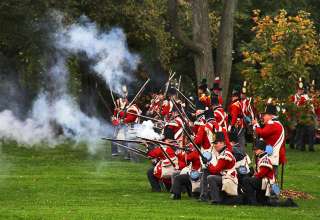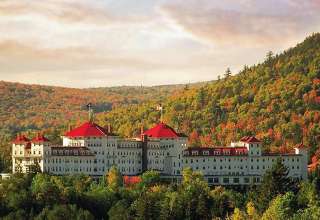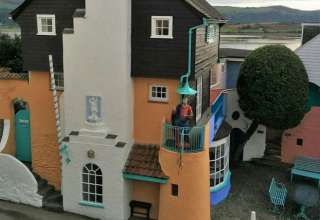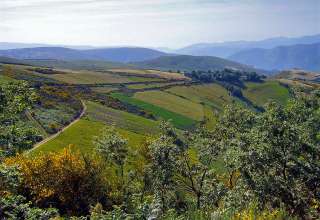There is a plaque in Niagara-on-the-Lake, Ontario that is dedicated to the marathon swimmers that have successfully swam across Lake Ontario. I never thought much about these swimmers until my son decided he’d attempt this 32-mile (52-kilometers) marathon swim in 2008. I accompanied him on this attempt and in the process learned all about what was involved in a swim that can last over 24 hours.
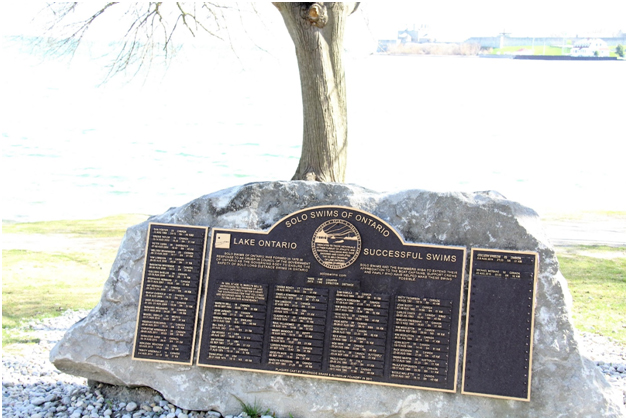
Most Canadians are aware that the first person to swim the Lake from Niagara to Toronto was Marilyn Bell, 68 years ago. Marilyn waded into the frigid waters of Lake Ontario at Niagara on September 8, 1954, at night. Evidently, she had never swam at night before. It wasn’t supposed to be a race, but she made it into one. The Canadian National Exhibition had offered $10,000 to American swimmer Florence Chadwick to swim the lake. But 16-year-old Canadian high school student, Marilyn Bell also took up the challenge and she slipped into the dark waters shortly after Flo departed.
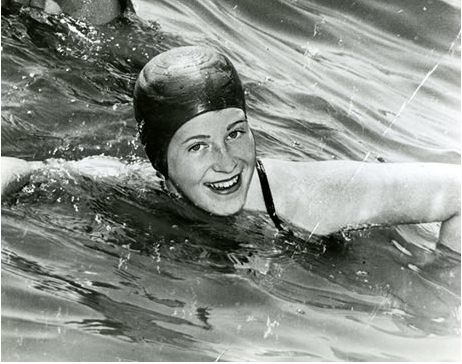
Marilyn’s coach Gus Ryder was in a boat ahead of her. No one ashore on the other side had any idea of the drama that was to unfold as Marilyn battled 4-metre waves, lamprey eels, exhaustion, and numbness. Ryder shouted encouragement and fed his swimmer corn syrup from a cup. At dawn, Marilyn had covered 22 of the 52-kilometres. She did not know it but she had already eclipsed Chadwick, who had become violently ill in the choppy water. When Marilyn became numb Ryder took out a black board and wrote FLO IS OUT! Marilyn’s best friend Joan Cooke shouted encouragement from the boat and Marilyn started swimming again. Meanwhile, word was spreading not only across Toronto but across all of Canada. A flotilla of media appeared and tens of thousands, eventually 250,000, gathered on shore.

At 6:30 in the evening, Marilyn reached her limit and Ryder ignored her father’s wishes to pull her out. Driven west by the current to Sunnyside on the Toronto shoreline, Marilyn finally touched the breakwater at 8:06 p.m. Because of the currents she had actually swum 64-kilometres. Pandemonium broke loose as Marilyn came ashore, the undisputed heroine of all Canada.
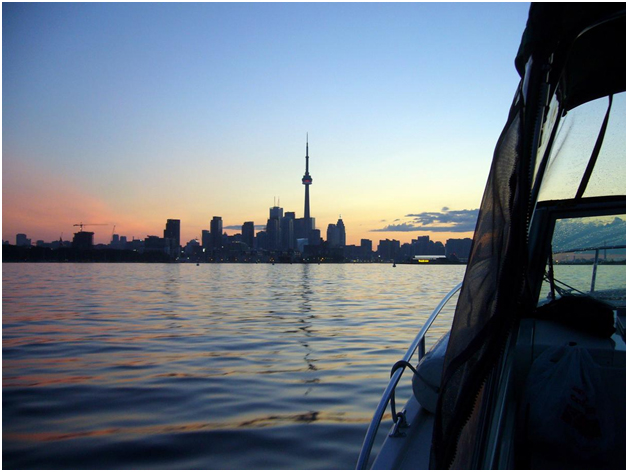
Today the plaque on the shore of Lake Ontario contains the names of over 50 people who followed Marilyn and who have successfully crossed to Toronto. Each name has its own story of skill, determination, and a tremendous effort. For instance, my son Shaun trained for nearly two years in pools, sometimes swimming back and forth for a mind numbing seven hours at a time. Swimmers must face contrary currents, cold water, waves and so much more that saps their energy and body temperature. Many failed in the attempt. Often, they fail not because of their own skills but often due to high waves, thunderstorms or long stretches of cold water caused by temperature inversions in the lake. Today, Marilyn still contacts all the swimmers to encourage them before they attempt the swim.
At night during the long crossing which can take over 20 hours, everyone in the accompanying boats must wear lights along with the swimmer to be visible. The swims are regulated by Soloswims Ontario after a swimmer drowned in the 1970’s. The regulations stipulate the swimmer can only wear trunks, swim cap and goggles, no wet suits allowed. They cannot touch the boat or any person, so food is often passed via a long stick with a cup on the end. To maintain their strength, they tend to eat every ½ hour while swimming in place. A high point in the swim is watching the sunrise after the long, long night.
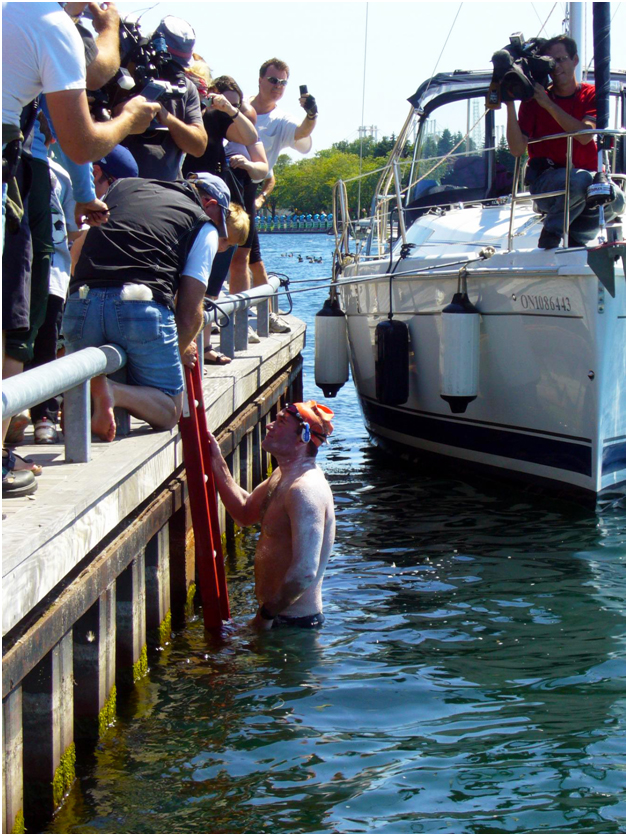
My son Shaun successfully finished his swim in just over 19 hours. He accomplished this despite waves at night that rose to nearly three feet and some long patches of cold water where the temperatures dropped by almost 20 degrees. As a firefighter in Toronto, he set out to raise money for the burn unit at Toronto’s famous Sick Children’s Hospital. It was an emotional moment when, a few days after the swim, he presented a cheque for $15,000 to the whole burn unit at the hospital.
He has gone on to become a swim master for Soloswims Ontario and has helped dozens of others in their marathon swim attempts. The latest was this summer when he helped Sean Nuttall do a double crossing. That’s right, as hard as it is to believe, Sean swam the width of the lake twice in 42 hours through two long nights, an amazing total of 100.6-kilometers. Evidently it is the eighth longest swim in history.
The next time you are in Niagara, or looking out over Lake Ontario, think of what these dedicated marathon swimmers went through to cross the lake the hard way.
For further information, visit www.niagaraonthelake.com
